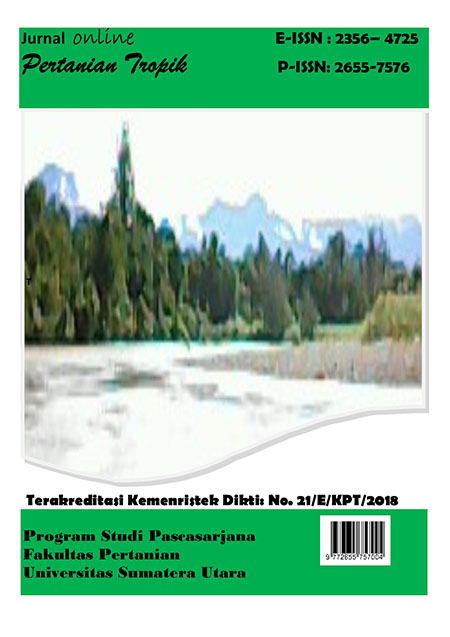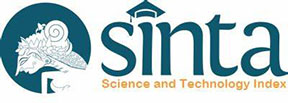Response on Growth of Oil Palm Seedling (Main Nursery) by Adding Several Amandement, Fertilizer and Sulphate Reduction Bacteria on Acid Sulphate Soils
DOI:
https://doi.org/10.32734/jopt.v5i3.3062Keywords:
Acid Sulphate Soil, Compost empty fruit bunches oil palm, Dolomite, Fertilizer, Oil palm seedling, Soil FertilityAbstract
Acid sulphate soil has potential to be good agricultural land if the condition meets. Therefore This research was conduct to learn the effect of several amendment, fertilizer and sulphate reduction bacteria (SRB) on the growth of oil palm seedlings and increasing nutrient content of oil plam seedlings.This research did on april 2017 until desember 2017, and used acid sulphate soil from Unit Payarambe PT. Mopoli Raya Aceh Tamiang Indonesia, and used oil palm seedling (3 month old). This research used Randomized Block Design with 3 treatments : Several amandment (without amandement, empty fruit bunches oil palm 30 tonnes/ha, Dolomie 15,8 tonnes/ha), fertilizers (without fertilizer, given fertilizer 2,5grams/seedling), and sulphate reduction bacteria (without SRB and given SRB 15 ml with total population 108/cc) with 6 replication. The results showed that the application empty fruit bunches oil palm compost 30 tonnes/ha increased plant height and stem statiscally significant after 28 weeks application. The best treatment was empty fruit bunches oil palm compost 30 tonnes/ha combined with inoculum of sulphate reduction bacteria.






















